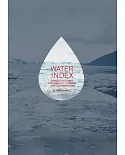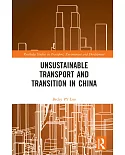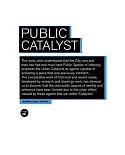"The 2007 bridge collapse in Minneapolis-St. Paul quickly became symbolic of the debilitated interstate highway system--and of what many critics see as America's disinvestment in its
infrastructure. The extreme vulnerability of single-purpose, aging infrastructure was highlighted once again when Hurricane Sandy churned its way across the northeast United States. Inundating
New York City's vital arteries, floodwaters overwhelmed tunnels and sewers; closed bridges; shut down the electrical substations thatcontrol mass transit; curtailed gas supplies; and destroyed
streets, buildings, and whole neighborhoods. For days and on into weeks, failures triggered by floodwaters deprived millions of electricity, heat, and water services. How can our complex,
interdependent utilities support an urbanizing world, subject to carbon constraints and the impacts of climate change? How might these critical networks be made more efficient, less
environmentally damaging, and more resilient? Such questions are at the heart of the approaches and initiatives explored in Next Generation Infrastructure. With a better understanding of the
possible connections between different services, not only can inadvertent disruptions be reduced, but crosscutting benefits and lower costs will be possible. Next Generation Infrastructure
highlights hopeful examples from around the world, ranging from the Mount Poso cogeneration plant in California to urban rainwater harvesting in Seoul, South Korea, to the multi-purpose Marina
Barrage projectin Singapore. Five bold organizing objectives are proposed that, in the hands of decision-makers and designers, will help bring about a future of multipurpose, low-carbon,
resilient infrastructure that is tightly coordinated with natural and social systems. In their conception and design, the innovative projects highlighted in Next Generation Infrastructure
encourage us to envision infrastructure within a larger economic, environmental, and social context, and to share resources across systems, reducingcosts and extending benefits. Through this
systems approach to lifeline services, we can begin to move toward a more resilient future. "--





















